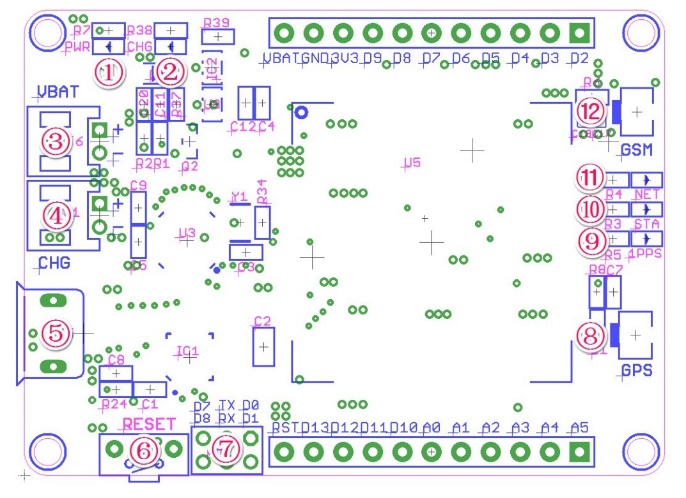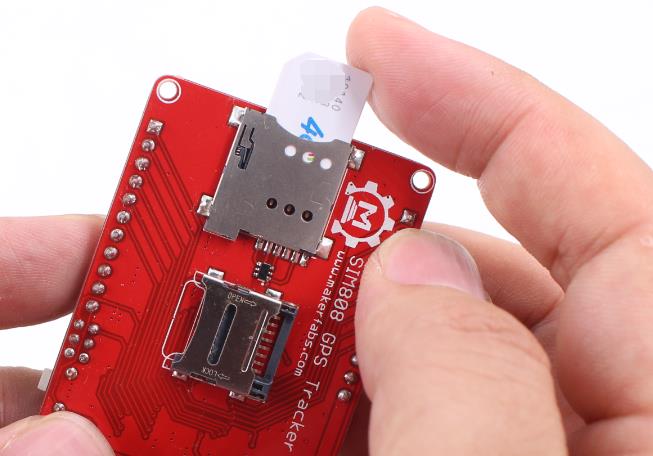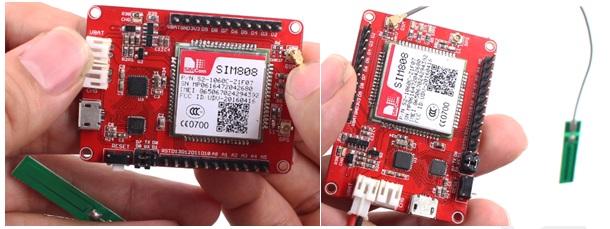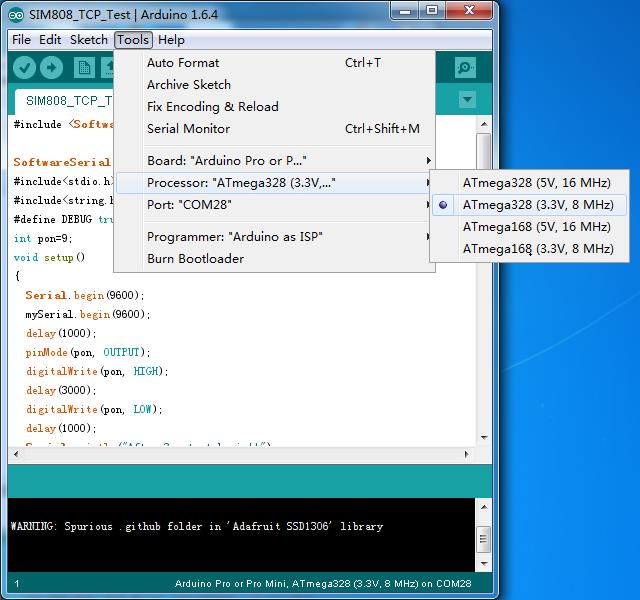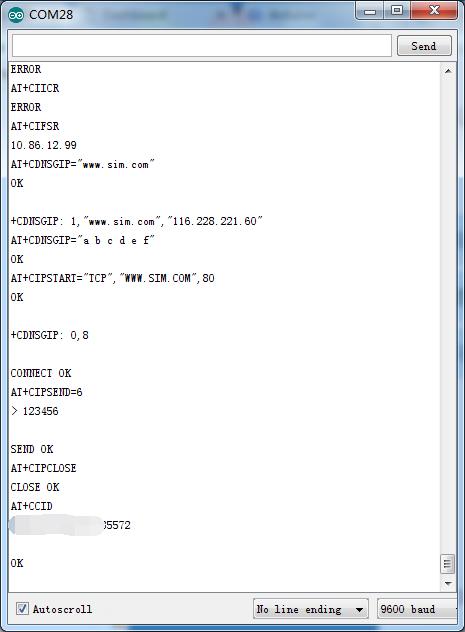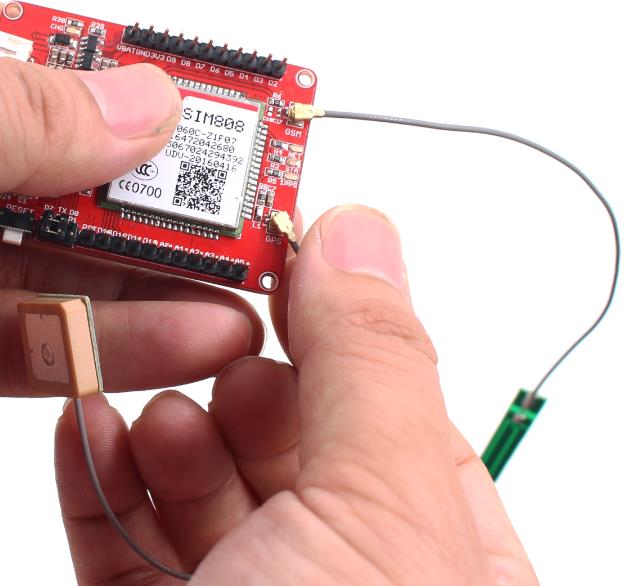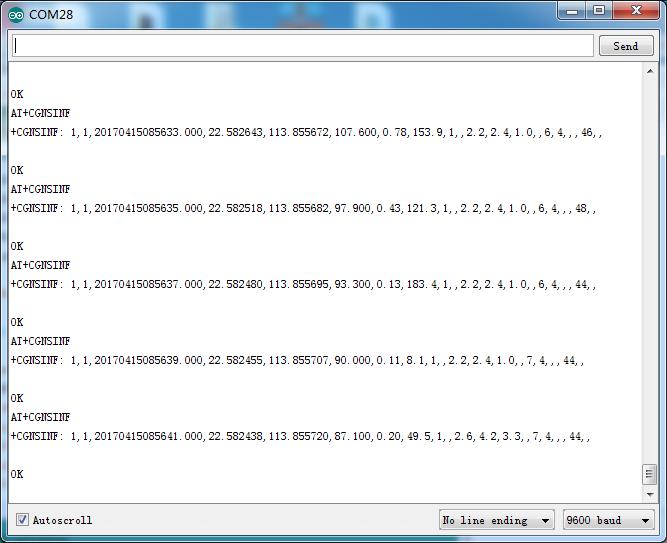Maduino SIM808 GPS Tracker
1. Introduction
SIM808 GPS Tracker is an IoT (Internet of things) Solution based on the ATmega328 and GPRS/GSM GPS module SIM808. it integrates a micro Controller Atmega 328, GRRS/GSM module SIM808, which is the upgrade version of SIM900, power management and storage, to make the SIM808 GPS Tracker ready for a real project for IoT projects such as smart-home, outdoor monitoring, shared bicycle, etc.
The SIM808 GPS Tracker based on the Arduino, users can program it with Arduino IDE, which is very easy especially suit for the none-programmers. There are also guide for users to learn how to create the first IoT project with this board, with which the starters can learn the hardware and programming skill quickly.
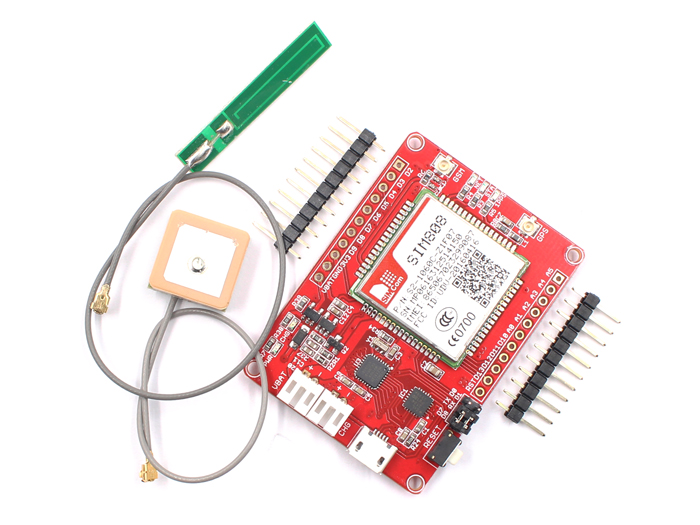
2. Features
- BAT Input Voltage: 3.4-4.2V
- ATmega328: 8MHz, 32KB flash, 2KB SRAM
- Micro SIM connector
- Integrated Power Control System
- AT command interface with "auto baud" detection Quad-band: 850/900/1800/1900Mz
- Send and receive GPRS data (TCP/IP, HTTP, etc.)
- GPS L1 C/A code
- 22 tracking /66 acquisition channels
- Tracking: -165 dBm
- Cold starts: -148 dBm
- Time-To-First-Fix:Cold starts-32s (typ.), Hot starts-1s (typ.),Warm starts-5s (typ.)
- Accuracy: approx. 2.5 meters
- Interface: I2C/SPI/UART/18*GPIO
- Arduino compatible
- Working Temperature: -40 – 85℃
- Default baud rate: 115200
- Size: 40*55mm
3. Interface Function
① PWR: Power indicate
② CHG: Charge indicate
③ VBAT: 3.7V Lipo battery connector
④ CHG: 5V power input, can connect the solar panel to charge the lipo battery
⑤ Micro USB: 5V power input, USB to serial communication
⑥RESET: Reset button for ATmega328
⑦ Serial port select:
D0&D1 hardware serial port
D7&D8 Software serial port
⑧ GPS: GPS Antenna IPX Interface
① Micro SIM Card Holder
② Micro SD Card Holder
Pins usage on Arduino - D0 - RX from SIM808 (Hardware Serial Communication Selected) - D1 - TX to SIM808 (Hardware Serial Communication Selected) - D2 - Unused - D3 - Unused - D4 - SD Card CS PIN - D5 - Unused - D6 - Unused - D7 - RX from SIM808 (Software Serial Communication Selected) - D8 - TX to SIM808 (Software Serial Communication Selected) - D9 - Power ON/OFF Control of SIM808 (High active) - D10 - Unused - D11 - Unused - D12 - Unused - D13 - Unused - D14(A0) - Unused - D15(A1) - Unused - D16(A2) - Unused - D17(A3) - Unused - D18(A4) - Unused - D19(A5) – Unused
4. Usage
4.1 [Case one]: GPRS Connectivity
SIM808 is a GPRS/GSM+ GPS Quad-band module, with this board, user can create IOT project such as data acquisition, remote controlling, GPS tracker and so on. The following simple application is use it as GPS tracker, to get your current location information. You can post your location information to the Google Maps then draw your trip.
1.Insert a Micro SIM card
The SIM808 GPS Tracker board uses the micro SIM card that is widely used in Android phone, install the Micro SIM card to the holder as below picture.
Note that some fee maybe needed for each SMS depends on your local GSM Operator, make sure that the SIM Card is active and enough money left for this application.
2.Connect the GSM Antenna and the 3.7V battery
Note:Due to the sim808 requiring a large supply current, if you only connect the USB to the board, it will not be working normally. must connect the 3.7V battery to supply power. when The STA indicator is steady on, and the NET indicator is blinking, the device running successfully.
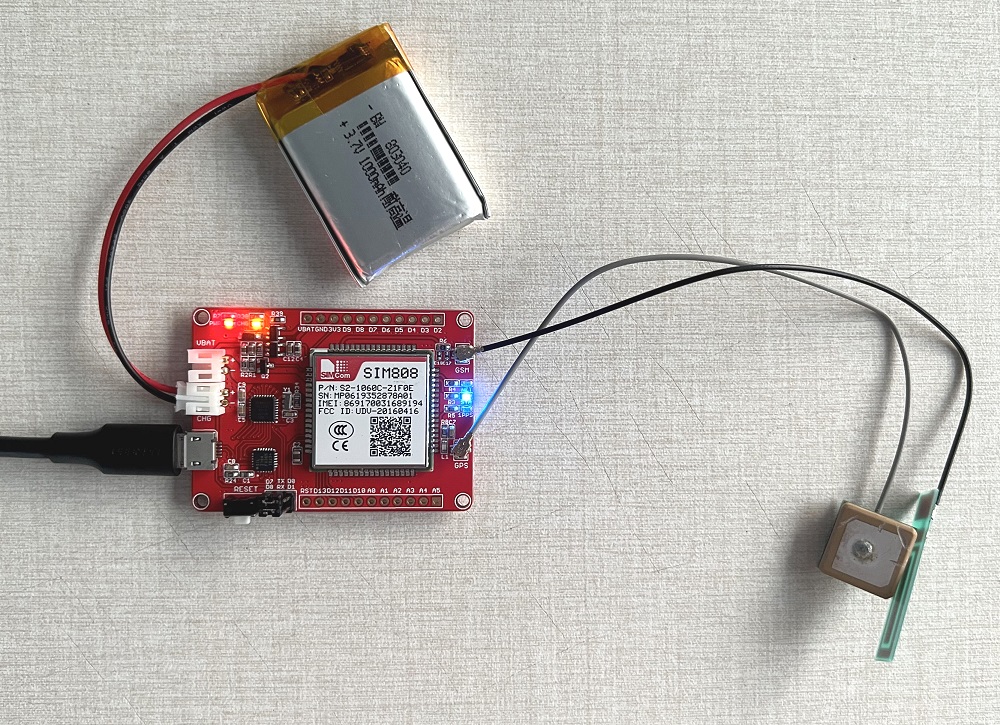
3.Programming and download
The SIM808 GPS Tracker can be capable of the GPRS connectivity for Internet, to upload/download data with internet. The following simple example shows the starters how to access a website on the internet (Users need check the AT commands for how to access a website):
sendData("AT+CCID",3000,DEBUG);
sendData("AT+CREG?",3000,DEBUG);
sendData("AT+CGATT=1",1000,DEBUG);
sendData("AT+CGACT=1,1",1000,DEBUG);
sendData("AT+CSTT=CMNET",3000,DEBUG);
sendData("AT+CIICR",1000,DEBUG);
sendData("AT+CIFSR",1000,DEBUG);
sendData("AT+CDNSGIP=\"www.sim.com\"",1000,DEBUG);
sendData("AT+CDNSGIP=\"a b c d e f\"",1000,DEBUG);
sendData("AT+CIPSTART=\"TCP\",\"WWW.SIM.COM\",80",5000,DEBUG);
delay(10000);
sendData("AT+CIPSEND=6",1000,DEBUG);
sendData("123456",1000,DEBUG);
delay(2000);
sendData("AT+CIPCLOSE",1000,DEBUG);
Select the right port and Arduino board: Arduino pro mini 3.3V 8MHz to upload the firmware to SIM808 GPS Tracker boards
4.Test Result
If the GPRS service accessible, the Maduino board gets data from the site, you can check the serial output debug info as:
As shown on the above picture, the SIM808 GPS tracker has connected to the www.sim.com and now you can upload/download the data.
4.2 [Case two]: Get GPS Location
The SIM808 GPS Tracker gets the GPS signal with UART interface, customers can stock the GPS info into the SD card, of send to the internet with the GPRS connectivity:
GNSS power control
void setgps(void)
{
sendData( "AT+CGNSPWR=1",1000,DEBUG); //power GNSS
sendData( "AT+CGNSSEQ=RMC",1000,DEBUG); // define the last NMEA sentence that parsed
}
Get current Location information
sendData( "AT+CGNSINF",1000,DEBUG);
Then the SIM808 will report the related GPS into to Atmega328, with the UART interface, you can check the reported GPS info via the Atmega hardware interface:
5. FAQ
You can list your question here or contact techsupport@makerfabs.com for technology support. Detailed descriptions of your question will be helped to solve your question.
